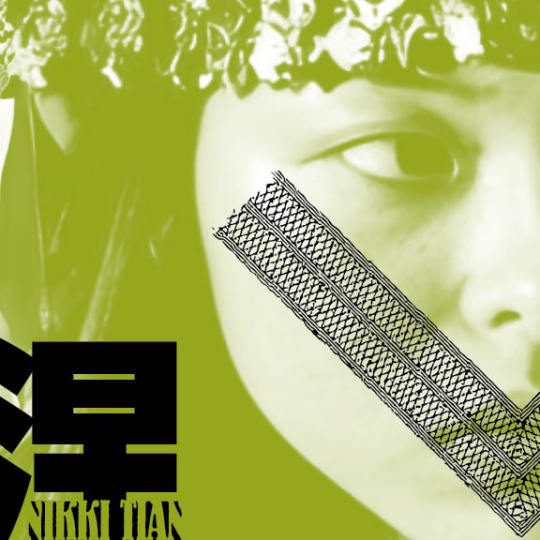#atayal
Explore tagged Tumblr posts
Text



1 note
·
View note
Text

Direction: Taroko National Park/ Part One


When I decided to visit Taroko National Park using only public transportation, I didn’t have high expectations, but I decided to give it a shot. I arrived at Hualien station in the morning and headed to the bus stop: no issues, except that the buses ran infrequently, and the schedules could be a bit unpredictable. Encouraged by the welcoming demeanor of the gentlemen and lady waiting at the bus stop, I decided to ask them for some information: that’s when, out of nowhere, my luck began!

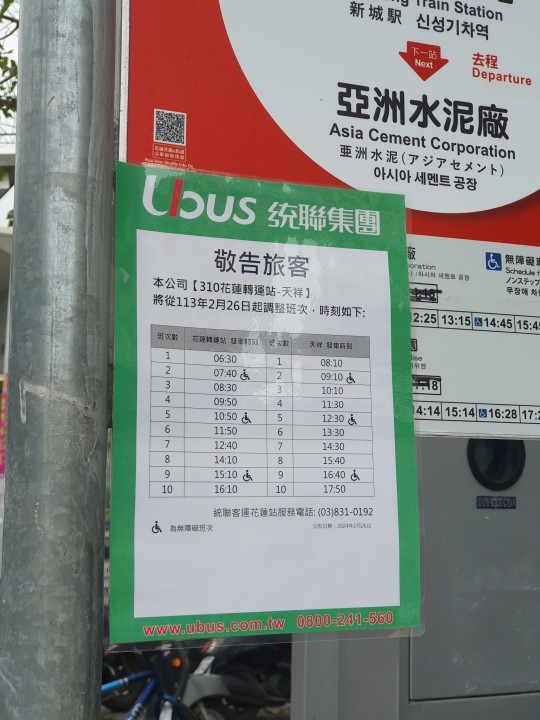
My luck was called 云霞 (Yun Xia), a Chinese lady's name, meaning "rosy clouds." After gathering some courage with my somewhat broken Mandarin and getting some helpful information from a few kind gentlemen, or 叔叔 (uncles), about whether my plan was feasible, a short, middle-aged woman with a warm and open attitude, reminding me a lot of one of my inspiring high school teachers, told me that she was heading in the same direction. That's how we ended up walking together toward 砂卡礑步道 (Shakadang Trail: the name likely comes from the Atayal indigenous group, where in the Atayal language it means 'molar teeth,' referring to those discovered during their settlement.)


From the station, we got off after 11 stops, and despite the slightly cloudy weather, once we passed the entrance and descended the steps, we were greeted by a lush, green landscape. I had thought Yun Xia would just accompany me to the stop, but instead, after exchanging a few words to get to know each other, taking photos of the scenery and of each other, despite my shaky Mandarin, we somehow understood each other very well, and continued to walk together.




We ended up walking the entire trail together, reaching one of the most scenic spots of the Canyon: crystal-clear water, smooth rocks, lush greenery, and dark clouds contrasting with a kind of grey mist that occasionally descended to the height of the trees.


Yun Xia decided to buy some local food from a few stalls run by locals, and her kindness, openness, and generosity towards everyone she met deeply inspired me. It felt like walking among friends, as she addressed every person we encountered as if she had known them forever, and they responded in the same way. I felt warmly welcomed by everyone we met, and she introduced me as her newly-met friend; despite the few words, the smiles, and gestures spoke volumes.



After avoiding a bit of rain and finishing the meal — which she insisted on offering me (black rice with a sweet filling, served inside bamboo) — we decided to head back. After all, we wanted to continue on to at least two more stops, and with the unpredictability of the buses, who knew if we’d make it! On the way back to the bus, we continued getting to know each other. She asked me, 'Try to guess what my profession was before retirement, 猜猜.' And guess what? As I had thought, of course she was a teacher!




This is just the first part of a short story from a late February 2024 day when I went to Hualien from Taipei, with the main goal of exploring Taroko National Park, without much planning. If you enjoyed this, stay tuned for the second part in the coming days, along with more adventures around Taiwan and mainland China.
Recalling these memories, it’s impossible not to think about the losses caused by the earthquake that occurred on April 4, one month after my trip. Due to the severe damage, this section of the trail is now closed. (Note: the earthquake had a significant impact on the region, and the trail has been closed ever since.)
#travel#traveling#travel blog#travelasia#taiwan#taipei#tarokonationalpark#hualien#nature#lanscape#exploringasia#travel lovers#canyon#taroko canyon
20 notes
·
View notes
Text
Ainu basics part 5
Grammar point 6.1 - Possessives This is something that doesn’t require previous Ainu knowledge. Today, we will learn the a few types of possessives in the Ainu language!
-kor
Kor can also mean “to own”, so this possessive particle is all about things that someone owns. If you didn’t know yet, in Ainu the pronouns have two forms; one to be used on its own and one to be attached to a verb when that said pronoun is the subject of the sentence. So, if you wanted for example to say “my house”, you’d say:
ku=kor cise (Ku= - I, Cise - house)
With the verb meaning in mind, this also means something like "the house that I own"
Ku=kor kotan (Kotan - town)
e=kor isopo (e= - you, Isopo - rabbit)
Inalienable possessives
Inalienable words are things that one cannot separate from oneself. Think bodyparts. In Ainu, this is the easiest possessive as you can just attach the noun to the word just like you do with verbs.
ku=sik (Sik - eye) e=pake (pake - face)
Not really a possessive but the genitive
In Ainu, the genitive applies to the possessed, not the possessor! This genitive marker is also a bit irregular. Examples:
Kisar (ear) > kisara, kisaraha Etop (hair) > etopi, etopihi Nan (face) > nanu, nanuhu Haw (voice) > hawe, hawehe Atai (price) > ataye, atayehe
There are two versions, a short and a long one. They’re used interchangeably.
Not all words have these forms, most of these words are body parts, clothes, animals, etc.
This is also paired with the pronouns just like verbs.
ku=kisara, ku=kisaraha e=nanu, e=nanuhu

12 notes
·
View notes
Text
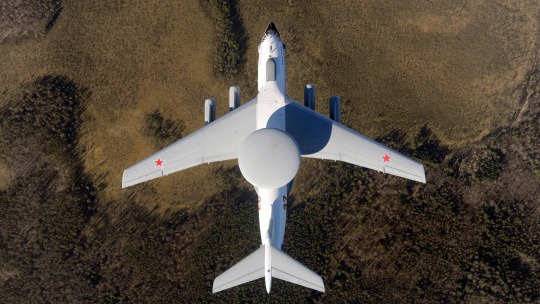
U.S. Army Officer Confirms Russian A-50 Radar Jet Was Shot Down With Patriot Missile
The U.S. Army colonel described how Ukrainian Patriot operators staged a “SAMbush” to bring down the A-50 in January of this year.
Thomas NewdickPUBLISHED Jun 10, 2024 6:55 PM EDT
The Beriev A-50U ‘Mainstay’ airborne warning and control system (AWACS) aircraft based on the Ilyushin Il-76 transport aircraft belonging to Russian Air Force in the air. ‘U’ designation stands for extended range and advanced digital radio systems. This aircraft was named after Sergey Atayants – Beriev’s chief designer. (Photo by: aviation-images.com/Universal Images Group via Getty Images).

A U.S.-made Patriot air defense system was responsible for shooting down a Russian A-50 Mainstay airborne early warning and control (AEW&C) aircraft over the Sea of Azov on January 14, according to a U.S. Army officer. The high-value aircraft, one of only a handful immediately available to Russia, was the first of two brought down in the space of five weeks. Previously, a Ukrainian official confirmed to TWZ that the second A-50 was brought down by a Soviet-era S-200 (SA-5 Gammon) long-range surface-to-air missile.
Speaking on a panel at the United States Field Artillery Association’s Fires Symposium 2024 last week, Col. Rosanna Clemente, Assistant Chief of Staff at the 10th Army Air and Missile Defense Command, confirmed that the first A-50 fell to a German-provided Patriot system, in what she described as a “SAMbush,” or surface-to-air missile ambush.

“They have probably about a battalion of Patriots operating in Ukraine right now,” Col. Clemente explained. “Some of it’s being used to protect static sites and critical national infrastructure. Others are being moved around and doing some really, really historic things that I’ve haven’t seen in 22 years of being an air defender, and one of them is a SAMbush … they’re doing that with extremely mobile Patriot systems that were donated by the Germans, because the systems are all mounted on the trucks. So they’re moving around and they’re using these types of systems, bringing them close to the plot … and stretching the very, very edges of the kinematic capabilities of that system to engage the first A-50 C2 [command and control] system back in January.”
Fifteen crew members were reportedly killed aboard the A-50.
Col. Clemente also provided some other interesting details of how the Ukrainians worked up their capabilities with these particular systems, which included a period of validation training involving the U.S. Army in Poland in April 2023.
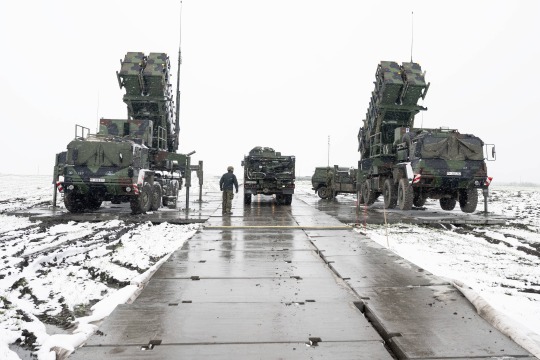
Elements of a German Patriot air defense system stand on a snow-covered field in Miaczyn, southeastern Poland, in April 2023. Photo by Sebastian Kahnert/picture alliance via Getty Images
According to Col. Clemente, the German soldiers tasked with training the Ukrainians on the mobile Patriot systems woke up the Ukrainian battery in the middle of the night, marched them to a location where they fought a simulated air battle, and then made them march again. “I was like, ‘Huh, wonder why they did that?’ And it was a month later, they conducted some of their first ambushes where they’re shooting down Russian Su-27s along the Russian border.”
As we reported at the time, the use of Patriot to engage the radar plane over the Sea of Azov seemed likely, especially as it followed the pattern of an anti-access counter-air campaign that Ukraine was already waging against Russian military aircraft using the same air defense system.
Accordingly, in May 2023, Ukraine began pushing forward Patriot batteries to reach deep into Russian-controlled airspace. Most dramatically, a string of Russian aircraft was downed over Russian territory that borders northeastern Ukraine. Among them may have been the Su-27s (or perhaps another Flanker-variant aircraft) that Col. Clemente mentioned.
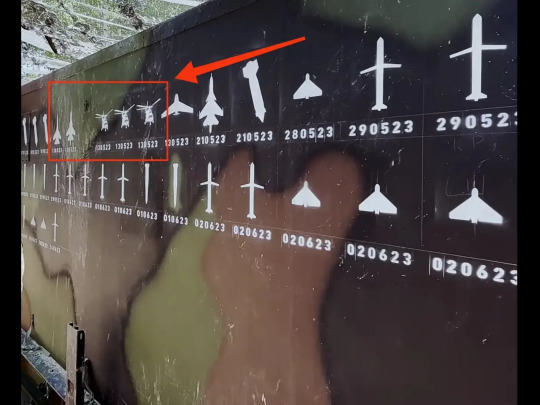
A screen capture from a Ukrainian Air Force video shows images of three Russian helicopters and two Russian fighters painted on the side of a Patriot air defense system. The three helicopter and two jet images bear the date May 13, 2023. Defense Industry of Ukraine
While the use of German-supplied weapons within Russian territory previously led to friction between Berlin and Kyiv, German officials more recently approved the use of Patriot to target aircraft in Russian airspace.
In December 2023, similar tactics were used against tactical jets flying over the northwestern Black Sea.

These kinds of highly mobile operations were then further proven with the destruction of the first A-50, on the night of January 14.

A Russian Il-22M radio-relay aircraft was also apparently engaged by Ukrainian air defenses the same night, confirmed by photo evidence of the aircraft after it had made it back to a Russian air base. It’s not clear whether the Patriot system was also responsible for inflicting damage on this aircraft, but it’s certainly a probable explanation.

A photo of the Il-22M which purportedly made an emergency landing in Anapa, in the Krasnodar region of western Russia. via X
Both incidents appear to have taken place in the western part of the Azov Sea and, as we discussed at the time, the distances involved suggested that, if Patriot was used, it was likely at the very limits of its engagement envelope.
Based on Col. Clemente’s account, it seems likely that the Patriot system in question was not only being pushed to the limits of its capabilities but was likely being deployed very far forward in an especially bold tactical move.
As we wrote at the time: “Considering risking a Patriot system or even a remote launcher right at the front is unlikely, and these airborne assets were likely orbiting at least some ways out over the water, this shot was more likely to have been around 100 miles, give or take a couple dozen miles.”
Of course, all this also depends on exactly where the targeted aircraft were at the time of the engagement.
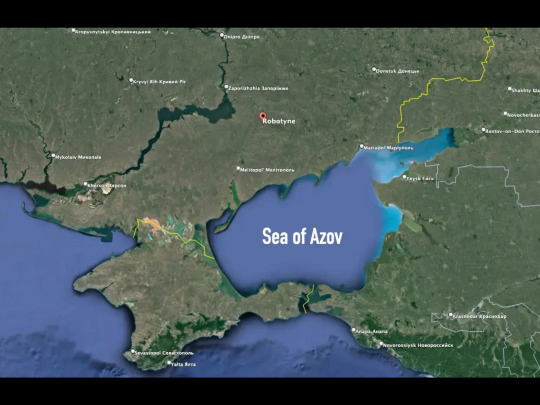
A map showing the Sea of Azov as well as Robotyne, which is really the closest Ukraine regularly operates to that body of water, a distance of roughly 55 miles. Google Earth
Once again, the A-50 shootdown may be the most important single victory achieved so far by Ukrainian-operated Patriot systems, but it was part of a highly targeted campaign waged against the Russian Aerospace Forces which has seemingly included multiple long-range downings of tactical aircraft.
The Ukrainian tactics first found success in pushing back Russian airpower and degrading its ability to launch direct attacks and even those using standoff glide bombs, which have wreaked havoc on Ukrainian towns.
The same anti-access tactics extended to Russia’s small yet vital AEW&C fleet have arguably had an even greater effect. After all, these aircraft offer a unique look-down air picture that extends deep into Ukrainian-controlled territory. As well as spotting incoming cruise missile and drone attacks, and low-flying fighter sorties, they provide command and control and situational awareness for Russian fighters and air defense batteries. According to Ukrainian officials, the radar planes are also used to direct Russian cruise missile and drone strikes.

Dmitry Terekhov/Wikimedia Commons
The importance of these force-multipliers has seen earlier efforts to disable them, with A-50s in Belarus having been targeted by forces allied with Ukraine.
The recent appearance of a photo showing a Ukrainian S-300PS (SA-10 Grumble) air defense system marked with an A-50 symbol also indicates that previous attempts were made to bring these aircraft down using this Soviet-era surface-to-air missile, too.
With all this in mind, it’s not surprising that Ukraine’s highly valued, long-reaching Patriot air defense system was tasked against the A-50.
In demonstrating the vulnerability of Russian aircraft patrolling over the Sea of Azov, the January 15 shootdown might have been expected to push these assets back. That may have happened, but another example was then shot down at an even greater distance from the front line, on February 23. The fact that the second A-50 came down over the Krasnodar region fueled speculation that it may have been a ‘friendly fire’ incident.
However, Lt. Gen. Kyrylo Budanov, the head of the Ukrainian Ministry of Defense’s Main Directorate of Intelligence (GUR), subsequently confirmed to TWZ that the second A-50 — as well as a Tu-22M3 Backfire bomber, in a separate incident — were brought down by the Soviet-era S-200 long-range surface-to-air missile system.
Undoubtedly, there are more details still to emerge about the shootdowns of the two A-50s, not to mention other engagements that the Ukrainian Patriot has been involved in.
However, Col. Rosanna Clemente’s comments confirm that the Ukrainian Air Force is using these critical systems in a sometimes-daring manner, using limited numbers of assets not only to protect key static infrastructure but also to maraud closer to the front lines and bring down high-profile Russian aerial targets. Not only does this force Russia to adapt its airpower tactics for its own survival, reducing its effectiveness, but it also provides another means for Ukraine to fight back against numerical odds that are stacked against it.
Contact the author: thomas@thewarzone.com
18 notes
·
View notes
Note
hi i have a water tribe oc and i want them to have face tattoos, what are some resources that you used when giving your sokka face tattoos? sorry
Don’t be sorry! BUT be aware that my own knowledge is a bit limited
I started out at this Wikipedia article and then I also found a lot of reference images by Googling because different tribes can have different designs so I wanted to see examples.
Also starting from the Wikipedia page I checked out different fave tattooing traditions in other cultures. It’s not super easy to find online in English but I also thought about what I know of the Atayal people here in Taiwan who have their own face tattoo traditions
6 notes
·
View notes
Text
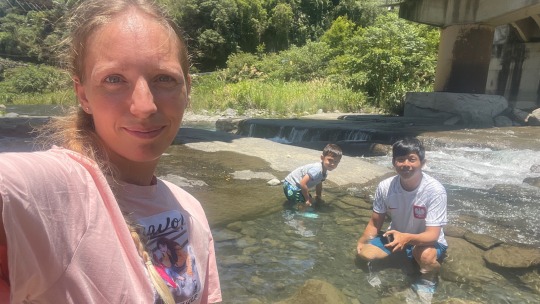

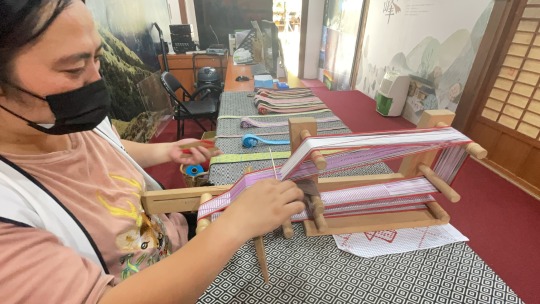
youtube
Zhang Xueliang's Former Residence is a museum dedicated to his life in Wufeng Township, Hsinchu County.
Zhang Xueliang played a significant role in the reunification of China in 1928. The house where Zhang was held under house arrest was damaged by a landslide in 1963. New building was reconstructed in the southwest of the original site.
The Museum of Aboriginal Peoples in Wufeng Township, formerly known as the Memorial Hall of the Former Residence of Zhang Xueliang, focuses on showcasing the culture of the Saisiyat and Atayal ethnic groups.
Zhang Xueliang's Former Residence to muzeum poświęcone jego życiu, znajdujące się w Wufeng, Hsinchu. Zhang Xueliang odegrał znaczącą rolę w zjednoczeniu Chin w 1928 roku. Dom, w którym Zhang był przetrzymywany pod aresztem domowym, został uszkodzony przez osuwisko w 1963 roku. Nowy budynek został odbudowany na południowo-zachodnim obszarze oryginalnego miejsca.
Muzeum Ludów Aborygeńskich we wsi Wufeng, wcześniej znane jako Hala Pamięci Dawnej Rezydencji Zhang Xuelianga, skupia się na prezentowaniu kultury grup etnicznych Saisiyat i Atayal.
Blog: https://polishgirlintaiwan.blogspot.com/2023/07/hsinchu-travel-japanese-style-residence.html
Video: https://youtu.be/r-IXT-xiDrg
2 notes
·
View notes
Text
Federal government plans to integrate local defense forces into the police and national army has led to days of violent protests across Ethiopia's northern Amhara region. There were reports of several people being shot at during protests held on Tuesday, which marked the sixth consecutive day of rallies against the government plans.
A resident of Dessie town, one of the areas that witnessed some of the most violent clashes, told DW that Tuesday's unrest had largely receded.
"There was occasional shooting in the morning but I think it was to disperse them [the protesters]. Now the shooting has stopped but roads are still closed," the resident said.
Meanwhile, similar developments were observed in Bahir Dar, the capital city of the Amhara region. Independent Ethiopian analyst Alemnew Mekonnen told DW that the anger observed on Tuesday had subsided, while some major roads remained blocked.
"Now things are calming down. Yesterday, there was a big demonstration in different areas. There was a mess yesterday but now, from all sides, things are calming down," Mekonnen said.
Stability after days of chaos
Mekonnen said that life is gradually returning to normal for residents after a week of instability. "Some workers are back in their offices. Transport services have been started. Things now are in a normal track," he said.
Curfews had been imposed on three major cities of Gondar,Dessie and Debre Birhan to prevent the protests from spiraling out of control. This was reportedly accompanied by an internet blackout, a tactic previously used by the Ethiopian government to quell dissent.
Eshetu Getnet, an eyewitness to the days of violence between Amhara and Oromo militants in the neighboring areas of Ataye and Jile, told DW that the federal defense forces were instrumental in stabilizing the situation.
"It is commendable that the defense is now working fairly," Getnet said.
Amhara left in a vulnerable position?
Ethiopian federal authorities have said that dissolving the Amhara Special Forces (ASF) and other militia groups in Ethiopia's 11 regions and integrating them into the federal army or police will create a strong and unified force in a country, where divisions have resulted in hundreds of thousands of deaths over the past 50 years.
But the protesters in Amhara believe the government's plans would leave their state vulnerable to attack from other regions. This comes after the ASF also played a crucial role in the government's war against Tigrayan rebels — a conflict that killed thousands and displaced many more.
The dismantling and integration into the national army of the ASF is part of the peace deal with Tigray, the stipulations of which are currently being implemented by the federal government.
Mekonnen told DW that the violent protests of recent days were largely triggered by a lack of engagement with the regional forces and militia on the government's part, as the details of the peace plan were being hashed out. "As far as I know, there was no discussion between the people and the special forces," he said.
Blen Mamo Diriba, an Ethiopian researcher at the Birkbeck College at the University of London, said that despite this, the recent escalation of tensions was "unnecessary."
"Caution is of high demand to prevent another bloody civil war," she cautioned on Twitter, underscoring the fragility of peace in the region.
Other analysts like Mekonnen have also called for more engagement between the federal government and regional leaders to resolve the situation in Amhara.
"The authorities should discuss with the people, with the special forces, with other stakeholders, so there can be some understanding," Mekonnen told DW.
Opting for mediation
One of the leaders of the Fano militia which fought alongside the federal forces against Tigrayan fighters in the recent war said that the way forward was through mediation.
"We have a cease-fire. It is settled. We will negotiate," the militia leader, who wanted to remain anonymous, told DW.
"Elders and church fathers are also engaged [in resolving the crisis]," he added, highlighting the importance of including local religious leaders in these talks.
Researcher Diriba, however, said that community leaders from the region should primarily focus on convincing the public to refrain from impulsive and violent acts, stressing that resolving the current crisis in Amhara was key to ending the precarious overall security situation in the country.
"Ethiopia must break this vicious cycle of violence. And the government ought to deliver on its duty in a legitimate manner without initiating hostile encounters with notable consequences on the nation's political stability and national security."
2 notes
·
View notes
Text
cinbwanan meaning world in atayal the song is about gaga as in their indigenous beliefs or rules the essence of the world basically and it reminds me of the ainu and their kamuy.... they are different ethnic roots tho..... if we're talking about actual shared roots then its taiwan's atayal + philippines' igorot tribe (Austronesian) which makes me want to delve more about igorot beliefs but i do know a little about anito which are ancestral spirits and they also reside everywhere all around us and anyway im just happy to have discovered this song cultivating my interest in indigenous culture and how both my countries are connected in ways i never realized before
2 notes
·
View notes
Text
Focus on essential oils - Litsea Cubeba
Recently we discovered a new essential oil, Litsea Cubeba. Its a mysterious name, with almost as mysterious a fragrance. The common name for the plant is May Change, an evergreen tree that is in the Lauracea family (Mountain laurels). May Change is native to China and much of Southeast Asia, where is is called “mountain pepper” (山胡椒) in Mandarin and maqaw (馬告) by the Atayal aborigines in…

View On WordPress
#handcraftedsoap#handmadesoap#benefits of essential oil#benefits of litsea cubiba#cleveland#Essential oil#handcrafted soap#images in bloom#Imagesinbloom#litsea cubiba#may chang#steve bloom
0 notes
Text
Discover the Top Taiwan Heritage Tours for Cultural Enthusiasts

# Discover the Top Taiwan Heritage Tours for Cultural Enthusiasts
Introduction
Are you a cultural enthusiast eager to delve into the rich history and heritage of Taiwan? Embark on a journey through time with Taiwan Heritage Tours, where the past comes alive through engaging narratives and immersive experiences. From ancient temples to traditional villages, Taiwan offers a plethora of cultural treasures waiting to be explored. Join us as we discover the top Taiwan Heritage Tours that will ignite your curiosity and leave you in awe of this fascinating destination.In this blog post, we will guide you through a comprehensive exploration of Taiwan's heritage, highlighting the must-visit sites, hidden gems, and unique experiences that await cultural enthusiasts. Whether you are a history buff, an architecture lover, or simply curious about the heritage of this vibrant island nation, Taiwan Heritage Tours offer something for everyone. Let's dive into the heart of Taiwan's cultural tapestry together.---
Section 1: Uncovering Taiwan's Rich Cultural Tapestry
Introduction Taiwan's cultural heritage is a blend of indigenous traditions, Chinese influences, and modern innovations. With a history dating back thousands of years, the island boasts a diverse array of cultural landmarks and historical sites that reflect its multifaceted identity.- Discover the fascinating history of Taiwan and how it has shaped the nation's cultural landscape - Explore the unique fusion of indigenous, Chinese, and Japanese influences in Taiwan's heritage - Learn about the significance of preserving and promoting Taiwan's cultural legacy through heritage toursMust-Visit Heritage Sites in Taiwan - National Palace Museum - Home to one of the world's most extensive collections of Chinese art and artifacts. - Chiang Kai-shek Memorial Hall - A tribute to Taiwan's former president and a symbol of the nation's democratic progress. - Fort Zeelandia - A colonial fortress witnessing Taiwan's complex history of Dutch occupation. - Sanxia Old Street - An architectural gem showcasing traditional Taiwanese buildings and craftsmanship. - Jiufen Village - An atmospheric town that inspired the animated film "Spirited Away."Practical Tips for Exploring Taiwan's Heritage - Plan Ahead: Research the sites you want to visit and make reservations for guided tours in advance. - Respect Local Customs: Be mindful of cultural traditions and etiquette when visiting temples and historical sites. - Stay Curious: Engage with local guides and residents to gain deeper insights into Taiwan's heritage.Challenges and Misconceptions - Language Barrier: While English is spoken in tourist areas, knowing some basic Mandarin can enhance your experience. - Crowds: Popular heritage sites can get crowded during peak seasons, so plan your visit accordingly.This section sets the foundation for understanding Taiwan's rich cultural tapestry and offers practical tips for cultural enthusiasts embarking on heritage tours in the region.---
Section 2: Immersing Yourself in Taiwan's Indigenous Heritage
Introduction Taiwan's indigenous peoples have inhabited the island for thousands of years, preserving their unique traditions, languages, and customs. Exploring Taiwan's indigenous heritage provides a glimpse into the rich cultural diversity that defines the island's identity.- Learn about the 16 recognized indigenous tribes in Taiwan and their distinct cultural practices. - Discover how Taiwan's indigenous communities are preserving their heritage through art, music, and storytelling. - Understand the significance of indigenous rights and cultural preservation in modern Taiwan.Indigenous Heritage Tours and Experiences - Wulai Aboriginal Village: Experience traditional Atayal culture through dance performances and artisan workshops. - Taiwan Indigenous Peoples Cultural Park: Learn about indigenous traditions, rituals, and crafts in a simulated village setting. - Paiwan Tribal Village: Explore the ancestral homes and sacred sites of the Paiwan tribe in southern Taiwan.Tips for Engaging with Taiwan's Indigenous Communities - Respect Traditions: Seek permission before taking photos or participating in cultural activities. - Support Local Artisans: Purchase handicrafts and souvenirs directly from indigenous artisans to support their livelihoods.Common Misconceptions Debunked - Homogeneity: Taiwan's indigenous tribes are diverse in language, customs, and traditions, dispelling the myth of a monolithic indigenous culture. - Marginalization: Efforts to promote indigenous heritage and rights have gained momentum in Taiwan, fostering greater recognition and inclusion.By immersing yourself in Taiwan's indigenous heritage, you gain a deeper appreciation for the island's cultural complexity and the resilience of its indigenous communities.---
Section 3: Exploring Taiwan's Religious and Architectural Icons
Introduction Taiwan's religious landscape is a fascinating tapestry of temples, shrines, and sacred sites that reflect the island's spiritual diversity and architectural splendor. From grand Buddhist monasteries to ornate Taoist temples, Taiwan's religious heritage offers a glimpse into the intersection of faith and artistry.- Delve into the history and significance of Buddhism, Taoism, and folk religions in Taiwanese culture. - Appreciate the intricate craftsmanship and symbolism found in Taiwan's religious architecture. - Explore the spiritual practices and rituals that define Taiwan's religious traditions.Iconic Religious and Architectural Sites - Longshan Temple - A renowned Buddhist temple in Taipei known for its intricate decorations and bustling atmosphere. - Fo Guang Shan Monastery - A modern Buddhist complex in Kaohsiung dedicated to promoting Humanistic Buddhism. - Confucius Temple - A tribute to the Chinese philosopher Confucius, showcasing traditional Chinese architecture and rituals. - Dajia Mazu Pilgrimage - Taiwan's largest religious procession honoring the sea goddess Mazu.Dos and Don'ts When Visiting Religious Sites - Do: Dress modestly and remove your shoes before entering temple grounds. - Don't: Take photographs in prohibited areas or disrupt ongoing rituals.Insights into Architectural Symbolism - Dragon and Phoenix: Symbols of power and harmony often found in Chinese temple architecture. - Lion Guardians: Statues that protect temple entrances and ward off evil spirits in Taiwanese folklore.Exploring Taiwan's religious and architectural icons provides a window into the island's spiritual traditions and artistic heritage, offering a holistic cultural experience for heritage tourists.---
Section 4: Tracing Taiwan's Colonial Legacy and Modern History
Introduction Taiwan's history is marked by centuries of colonization and cultural exchange, shaping its identity as a vibrant crossroads of East Asian heritage and modern development. From Dutch and Japanese colonial rule to Taiwan's democratic transition, the island's past unfolds a complex narrative of resilience and reinvention.- Examine the impact of Dutch, Spanish, and Japanese colonial legacies on Taiwan's cultural heritage. - Trace Taiwan's journey from authoritarian rule to democracy and its ongoing quest for international recognition. - Reflect on the challenges and opportunities of preserving Taiwan's historical memory in a rapidly changing world.Colonial Heritage Sites and Memorials - Anping Old Fort - A Dutch-era fort in Tainan showcasing Taiwan's early colonial history. - Jinguashi Gold Ecological Park - A former mining town that highlights Taiwan's industrial history under Japanese rule. - 228 Peace Memorial Park - Commemorating the victims of the 228 Incident, a key event in Taiwan's democratization process.Navigating Taiwan's Complex History - Colonial Legacies: Acknowledge the diverse influences that have shaped Taiwan's cultural identity, from colonial architecture to culinary traditions. - Democratization: Learn about Taiwan's path to democracy and its role in promoting human rights and self-determination.Challenges in Preserving Taiwan's Modern History - Political Controversies: The sensitive nature of historical narratives in Taiwan's relations with mainland China and other geopolitical actors. - Cultural Heritage Conservation: Balancing modern development with heritage preservation to ensure the sustainability of Taiwan's historical landmarks.Exploring Taiwan's colonial legacy and modern history offers a nuanced perspective on the island's evolution and resilience in the face of historical challenges, providing enriching insights for heritage enthusiasts.---
Section 5: Embracing Taiwan's Living Traditions and Artistic Heritage
Introduction Taiwan's cultural vibrancy extends beyond its historical monuments to encompass a thriving arts scene, vibrant festivals, and dynamic folk traditions that celebrate the island's creativity and innovation. From traditional crafts to contemporary art galleries, Taiwan's artistic heritage is a testament to its enduring spirit of cultural expression.- Celebrate the diversity of Taiwan's performing arts, visual arts, and culinary traditions that define its artistic landscape. - Discover the interplay between tradition and innovation in Taiwan's creative industries, from puppetry to contemporary dance. - Embrace the opportunity to engage with local artisans, performers, and cultural practitioners to experience Taiwan's living heritage firsthand.Artistic and Cultural Experiences in Taiwan - Penghu Ocean Fireworks Festival - A dazzling display of traditional firecrackers and fireworks in Penghu. - Taipei Fine Arts Museum - Showcasing a diverse range of modern and contemporary Taiwanese art. - Sanyi Wood Sculpture Village - A hub of traditional woodcarving craftsmanship in central Taiwan.Sustainability and Innovation in Taiwan's Art Scene - Handicraft Revival: Efforts to preserve traditional crafts and promote sustainable practices in artisan communities. - Cultural Heritage Conservation: Integrating modern design and technology to revitalize historic sites and traditional art forms.Engaging with Taiwan's Artistic Community - Artistic Residencies: Participate in cultural exchange programs and artist residencies to immerse yourself in Taiwan's creative scene. - Artisan Workshops: Learn traditional crafts from local masters and support the preservation of Taiwan's artistic heritage.Embracing Taiwan's living traditions and artistic heritage offers a dynamic cultural experience that combines creativity, innovation, and community engagement, inspiring heritage tourists to connect with the island's vibrant cultural landscape.---
Conclusion
As we conclude our exploration of Taiwan Heritage Tours for cultural enthusiasts, we invite you to embark on a transformative journey through Taiwan's rich history, diverse heritage, and vibrant cultural tapestry. From ancient temples to indigenous villages, colonial relics to contemporary art scenes, Taiwan offers a treasure trove of experiences waiting to be discovered and cherished.By engaging with Taiwan's cultural heritage through immersive tours, local interactions, and hands-on experiences, you not only deepen your understanding of the island's past but also contribute to the preservation and promotion of its living traditions. Whether you are a seasoned traveler or a curious explorer, Taiwan Heritage Tours offer a gateway to the heart and soul of this fascinating destination, where history meets innovation, tradition meets modernity, and every corner reveals a new chapter in Taiwan's cultural narrative.As you plan your next cultural adventure, remember that Taiwan's heritage is not just a reflection of the past but a living, breathing testament to the resilience, creativity, and diversity of its people. So pack your bags, open your mind, and get ready to uncover the wonders of Taiwan's cultural legacy with Taiwan Heritage Tours.Join us on a journey of discovery through Taiwan's heritage, where every step reveals a new story, a new adventure, and a new chapter in the island's rich tapestry of culture and history. Let Taiwan Heritage Tours be your guide to a world of wonders waiting to be explored.---
Frequently Asked Questions
Q1: What makes Taiwan's cultural heritage unique? Taiwan's cultural heritage is a blend of indigenous, Chinese, and international influences, reflecting the island's diverse history of colonization, migration, and cultural exchange.Q2: How can I book Taiwan Heritage Tours? You can book Taiwan Heritage Tours through reputable tour operators, travel agencies, or online platforms specializing in cultural and heritage experiences in Taiwan.Q3: Are Taiwan Heritage Tours suitable for solo travelers? Yes, Taiwan Heritage Tours cater to solo travelers seeking immersive cultural experiences, group tours with like-minded enthusiasts, and customized itineraries based on personal interests.Q4: What should I pack for a Taiwan Heritage Tour? Pack comfortable walking shoes, light layers for varying weather conditions, sun protection, and a respectful attitude towards local customs and traditions.Q5: How can I support the preservation of Taiwan's cultural heritage? Support local artisans, attend cultural events and festivals, follow sustainable tourism practices, and engage with indigenous communities to promote cultural preservation and appreciation.Q6: Are Taiwan Heritage Tours suitable for families with children? Yes, Taiwan Heritage Tours offer family-friendly activities, educational opportunities, and interactive experiences suitable for children of all ages to learn about Taiwan's cultural heritage.Q7: What languages are spoken on Taiwan Heritage Tours? Most tours are conducted in Mandarin Chinese, with English-speaking guides available for international visitors. Some tours may also offer interpretation in other languages based on guest preferences.---
Tags
Taiwan Heritage Tours, Taiwanese culture, historical sites in Taiwan, indigenous heritage, cultural experiences, religious architecture, colonial history, artistic traditions, cultural preservation. Read the full article
0 notes
Text
2024年7月17日-- FULBRIGHT & 順益台灣原住民博物館 (Fulbright & The Shung Ye Museum of Formosan Aborigines)
Today we went to the Fulbright commission in Taiwan (this is a note to myself to mind the spelling bc I was misspelling it and using two ‘l’s for the longest time lol)! I had a lot of fun there and speaking with all of the members of the commission there helped me to feel more confident about the application process, my qualifications, and the steps I need to take to make sure everything goes smoothly!
I also really liked the 便當 that was provided to us (although I know a few of my buds weren’t too sure on the seasonings for themselves)! That reminds me that I’m really glad that I’m acclimating to the flavors/seasonings here in Taiwan! When we first arrived, I was culture shocked by how much less seasoning (mainly just salt really) is used in the cuisine here compared to The States. I remember trying the scrambled eggs on my first day and not loving them because they had little to no salt. But yesterday I tried them again and I liked them just fine! And today with my breakfast I had some cereal that I’m pretty sure was much less sweet than the ones back at home and I also liked it just fine! Today as well with the 便當, I know for a fact if I had tried that a year ago, I probably would have had to dump a gallon of salt on everything before eating it lol, but today I liked it a lot!
Although in general I’ve noticed I’m growing up taste-wise I think– I no longer drink sweet tea (plz don’t let my childhood friends and neighbors know, they will revoke my fake-southern card ;_;). I also have been switching to drinking unsweetened lattes, and anytime I try a drink with sugar, I almost always think it needs less after taking a few sips.
In the afternoon, we met back up with our tour guide Peter, and we went to the Shung Ye Museum of Formosan Aborigines! We took a bus there, and it was my first time on a Taiwanese bus! Unfortunately, the AC was broken and so we “enjoyed” a makeshift sauna while we rode for about twenty minutes over to our destination. Thankfully, the bus back had working 冷氣, so there was no more suffering after the museum hehe. The museum was super cool! I love learning about indigenous peoples, especially about their beliefs systems, religions, and holidays. What was really cool was learning about some of these things and noticing the similarities they hold with other cultures I’m familiar with. For example, I came across a museum label detailing a story from the Atayal tribe, which speaks about how there used to be two suns, and that warriors shot one down– killing it and making it the moon. Although I believe the sun dying and becoming the moon is absent from the following myth, the shooting down of suns is very much an aspect of the Chinese myth of Hou Yi and Chang’e!
Amy and I got to do the little irl dance minigame on the top floor, and I won by a landslide! (although technically it was through cheating because I have big feet and the points were based on you touching the lit up footsteps, which would trigger the sensor to award you points. So in reality, I only won because I have big feet and I just so happened to be clumsy but in the right direction– and would brush the sensors on the edges LOL).
Academic reflection:
The first thing that I would like to discuss is the article’s discussion of the outflow of indigenous peoples from their tribes/villages to the city for better work and life opportunities. This stuck out to me the most because this is a pressing issue that affects so many parts of the world, not only in Taiwan but also in China. During a project for my Advanced Chinese class, I learned about the matriarchal society of the Mosuo People (摩梭族). Long story short, it was incredibly distressing to discover that its culture, like many other minority cultures around the world, are at risk of eventual extinction.
I remember my professor for Second Language Acquisition telling my class about how she had a colleague who helped discover a plant that was fundamental for a cure of a particular sickness ONLY because they were able to extract that information through analyzing the language of the locals in the area. Languages are special and they are not only infused with culture and a people’s values, but also with crucial information about the area that the language formed and developed within.
The sad thing is that languages are going extinct at an alarming rate, in large part because most of the global economy functions on capitalistic tendencies which require people to go out and work to earn money to survive. However, the only way to work within an economy is to know the language that that economy is functioning within. In Taiwan’s case, it’s Mandarin Chinese. Furthermore, with English being the lingua franca, it has become the standard that forces many academics to study it to professional fluency and publish their research within it if they want even the slightest chance for their work to be broadly noticed or accepted within academia. With this in mind, if one was to want to provide the best life for themselves, or say their children, their best bet would be to immerse yourself within either the local language or one of the massive global languages to give yourself the best opportunities. This is all fine and dandy, except this often means forgetting your own original culture and language, because let’s face it, it’s hard work to maintain fluency in multiple languages and record information of your own history (especially if most of that history was told to you as a child by your grandparents or family by word of mouth).
In many ways, having English as a mother tongue is a massive privilege that affords many opportunities to its speakers, many of which (from my experience) its speakers take for granted. Many are unaware of why it’s important to preserve languages and why pushing one language as the end-all-be-all for all global functions (although convenient) is detrimental to the preservation of cultures and its languages. Furthermore, in Taiwan (and China too), having Mandarin as the main working language which every facet of government and society functions through, sets up these indigenous cultures for extinction as members of these peoples continue to choose a better life for themselves and their families.
But on a brighter note, I loved that the little film we watched incorporated parts of one of the indigenous languages. It's wonderful to see that there is media infused with it and that resources are being expended to try and record, preserve, and restore the languages in Taiwan. I just hope there’s linguists who are being funded to actively go out and record as many of the languages as possible, especially the ones without orthography. I also loved seeing on the map at the museum entrance where the Austronesian language family covers the globe!
(You can tell this is something I feel very passionately about because I started rambling LOL)










1 note
·
View note
Text

★PAC畢加索數位藝術認證平台-twa‘omas塔哇歐瑪司故事
第九張作品-聖山的熔岩-泰雅族Atayal
火山灰下的繁華——龐貝古城的毀滅(公元79年)
2019年的大屯火山群岩漿庫/(山火鳥)生活在火山裡的紅色怪鳥。
台灣泰雅族與賽夏族原住民堅信大霸尖山是其祖先發祥地,視為聖山。大霸尖山位於台灣的雪山山脈,聖稜線北端,其山勢突地拔起,危峰孤峙,遙望如同覆置的大酒桶,四面崖壁寸草不生,山形冷峻,令人生畏,素有「世紀奇峰」之稱,高峰聚集,氣勢宏偉,稱得上是北台灣的屋脊。
屯火山群的活動性在近年來普遍受到火山與地球物理學家、地質學家的關注。近年的火山沉積物調查發現,大屯火山群於最近的兩萬年中仍有持續活動的現象。目前已知的最後一次活動很可能在5,000~6,000年前,已符合國際火山學會的「活火山」定義,並非休火山。
2019(日環食奇景)新月當天(即朔日)百年難得一見錯過再等195年
●泰雅族Atayal《幻化鷹文面勇武射之日TheM'kwali'Facial tattoingShooting Sun Legend》
●靈紅鵟Faith信仰
網址連結:https://www.picassocert.com/Silk_Road/modern/Twaomas
#PAC
#畢加索數位藝術認證平台
#數位美術館
#5D美術館
#twaomas
#塔哇歐瑪司
#トワオマス
#台灣風味原住民
#台灣
#Taiwan
#Aboriginal
#原住民
#原民
#神獸
#大自然英雄
#IP
#泰雅族
#Atayal
#哈勇
#Hayun
#瑪雅
#Maya
#大霸尖山
#射日傳說
#文面勇武
#幻化成鷹
#山火鳥
#靈紅鵟
#Faith
#信仰
#artvsartist
#illustrator
#Painter
0 notes
Text
TOC: Concentric | Studies in Linguistics Vol. 50, No. 1 (2024)
2024. iii, 111 pp. Table of Contents ARTICLES Acoustic and articulatory variation of Mandarin diphthong /ou/ Yung-hsiang Shawn Chang pp. 1–19 On a dichotomy of question types: The case of Paiwan Po-Hsuan Huang & One-Soon Her pp. 20–56 Dialectal distinctions in Plngawan Atayal: Current state and history Andre Goderich pp. 57–88 Power, solidarity, and sajiao in dementia care Shumin Lin pp. 89–111 http://dlvr.it/T7z53l
0 notes
Text
I am blocking you @hopefultidalwavefox because you are trolling and that I'm sure I’ve blocked before since this is the only post you’ve reposted and comment on.
I just wanted to make sure people actually look at Indigenous Bridges and their leadership instead of the Zionist propaganda @hopefultidalwavefox is sprouting.
Thank you Indigenous Bridges!!



2K notes
·
View notes

